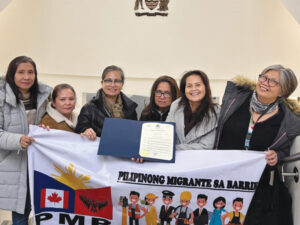The International Monetary Fund (IMF) at the conclusion of its 2016 Article IV Consultation Mission to the Philippines said it still sees the economy growing by 6 percent this year, but needs a new medium-term strategy to boost growth even further.
“The Philippine economy has performed well, but there is scope to do even better. Real GDP [gross domestic product] regained strength from a slowdown in mid-2015 to record a robust 6.9 percent in the first quarter of 2016, in line with our 6 percent year-on-year growth forecast for 2016 as a whole,” Chikahisa Sumi, IMF mission chief, said in a press conference on Tuesday.
Sumi stressed that the continued solid growth in 2016, despite the external headwinds, is due in part to fiscal stimulus and supportive monetary conditions.
The IMF, however, said that even with strong economic growth and improved governance, there is still a need to ensure that the benefits reach the broader population.
Sumi noted that infrastructure quality and social indicators in the country are still below those of the Philippines’ peers.
“The unemployment rate has fallen to a decade’s low of 5.3 percent, but significant underemployment and poverty remains,” he said.
10-point agenda
The IMF said President Rodrigo Duterte’s 10-point reform agenda would anchor policy formulation and structural transformation over the medium-term.
Sumi said given the large infrastructure and social needs and ample fiscal space, the multilateral supported raising the national government budget deficit to 3 percent of GDP over the medium term, consistent with a broadly stable debt-to-GDP ratio.
“We would moreover encourage a comprehensive and equitable tax reform package that raises substantial additional revenue to finance higher productive spending that would crowd in private investment,” he said.
Over the medium term, IMF noted that a higher revenue and productive spending scenario of about 3 percent of GDP, with the expeditious implementation of the 10-point reform agenda, raised the IMF’s baseline growth outlook of about 6 percent to 7 percent to a 7 percent to 8 percent range.
“This additional effort scenario would make the Philippines one of the fastest growing (if not the fastest) economies in the world and help reduce poverty toward the government’s ambitious target,” Sumi said.
IMF said key elements of this medium term strategy could include:
- A comprehensive tax reform package that simplifies the personal income tax (PIT) rate structure, indexes tax brackets for inflation, and eliminates the exemptions could be progressive while raising the relatively low revenue ratio through offsetting higher excises on fuel, rationalization of value-added tax exemptions, and excises on sweetened beverages. The package could also include simplifying and reducing the corporate income tax (CIT) rate structure while at the same time rationalizing tax incentives;
- Enhanced infrastructure investment, including in areas that have not benefited from such investment in the past, should help create jobs and make growth more inclusive.
- Structural reforms such as liberalizing foreign investment and land use will help catalyze the effects of higher government spending; and
- Enhanced competition in the crucial transport, logistics, and telecoms sectors should be achieved through steadfast implementation of the competition law and avoiding regulation that unduly discourages new entrants. (M. Caraballo, MT)








